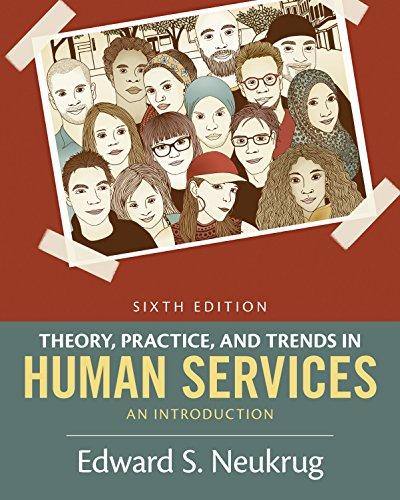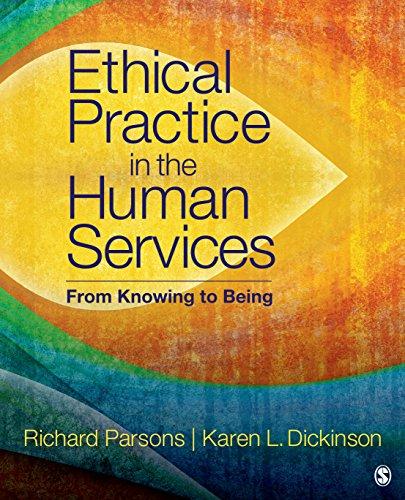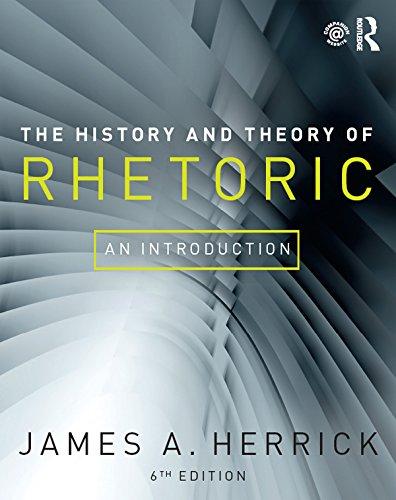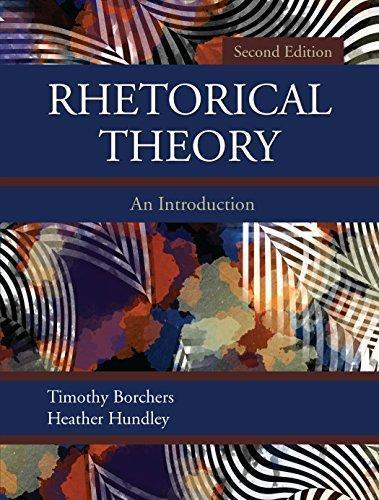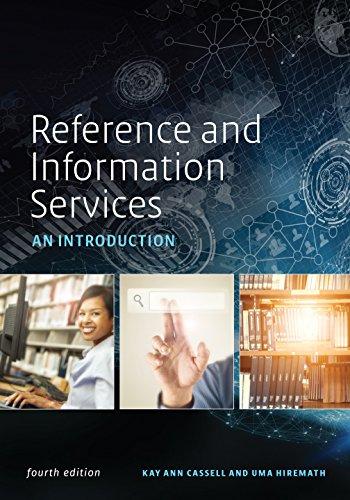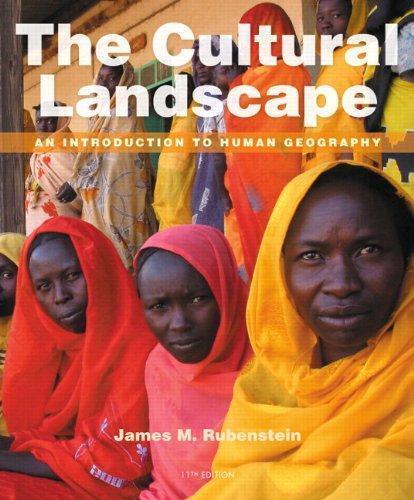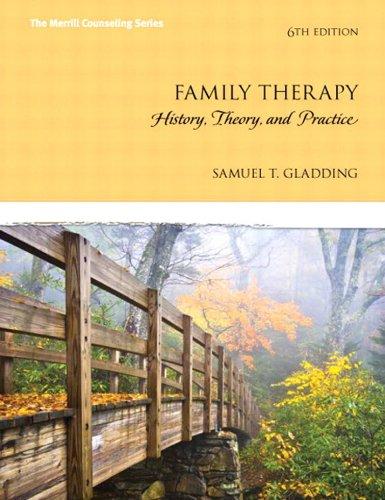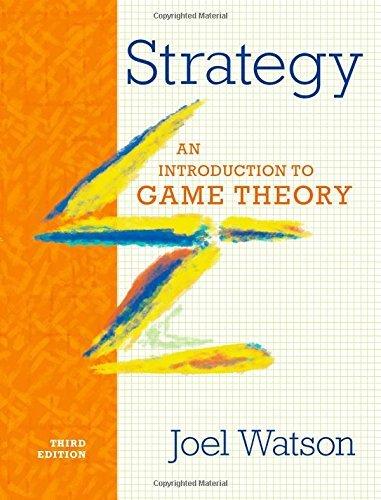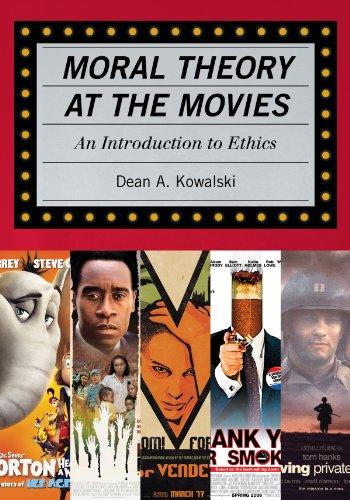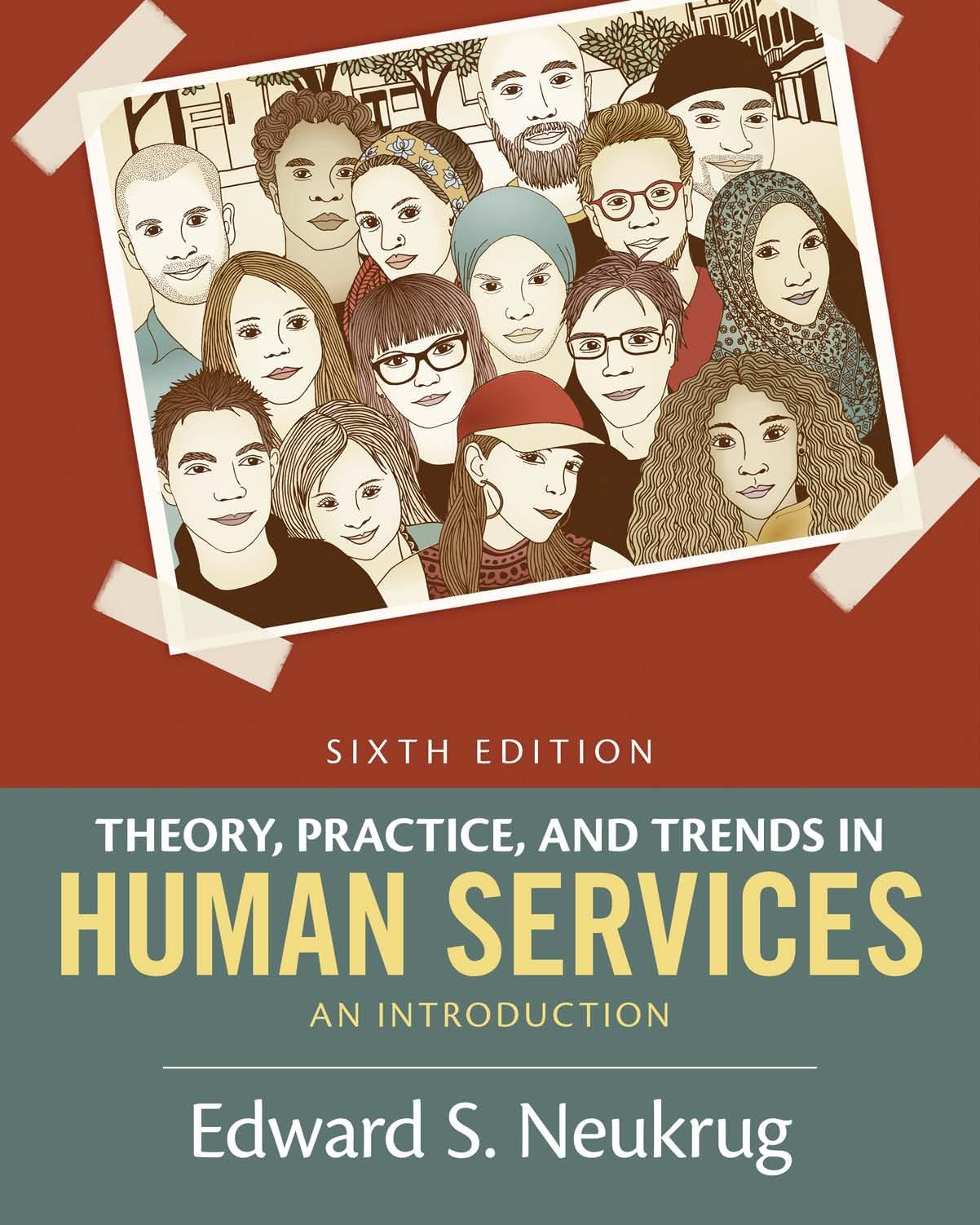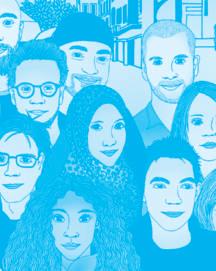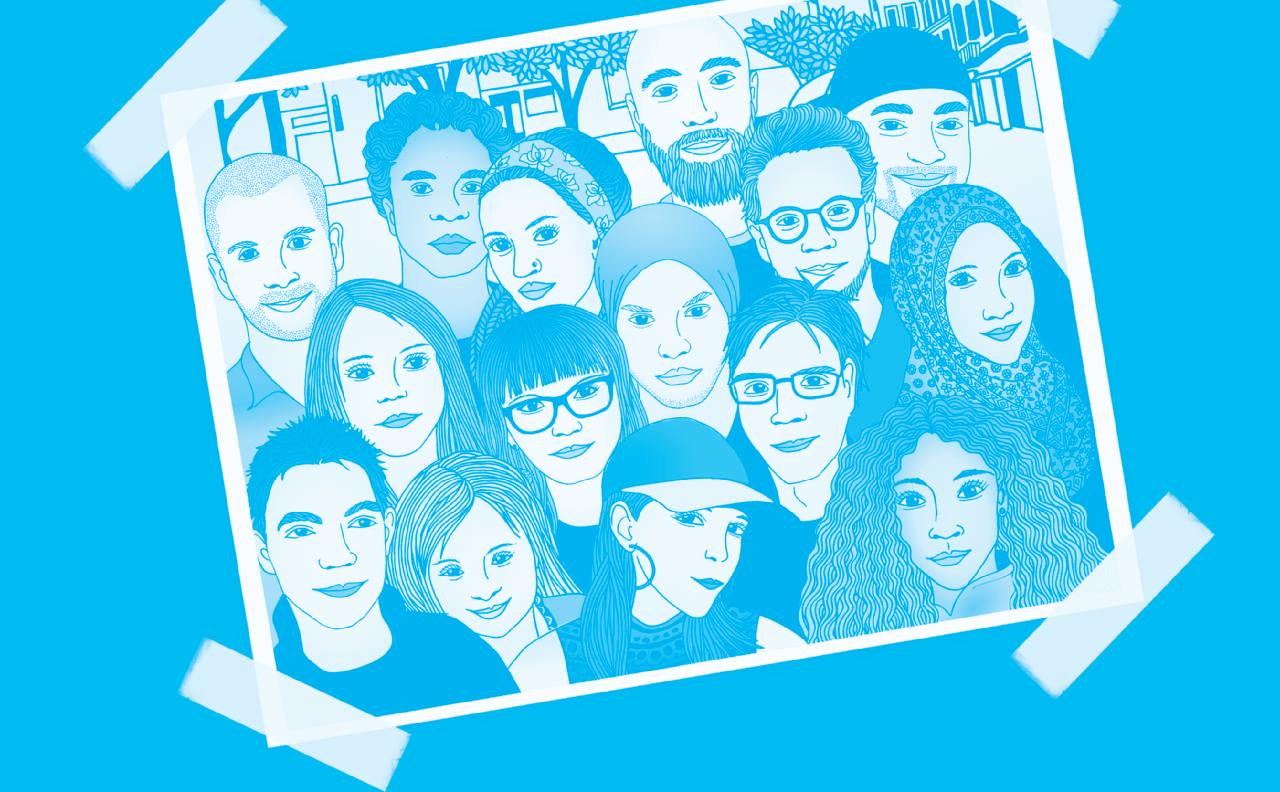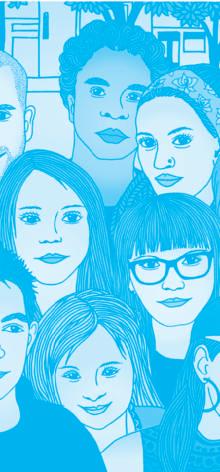Preface
PURPOSE OF TEXT
When a book goes into its sixth edition, you would think that all that could be said about a profession has already been said. Not true in human services. As a relatively young profession, human services is changing quickly and redefining itself constantly. Thus, there has been much new material added to this text. From the recently developed credential called “Board Certified—Human Service Professional,” to the spreading popularity and accreditation of human services programs, to the newly revised Ethical Standards of Human Service Professionals, this is a field on the go. When so many changes are being made in a profession, they must be reflected in any text that surveys this field. Thus, the purpose of this edition is to offer the most up-to-date overview of the field of human services as possible. To meet this goal, many changes have been made in the text, a large portion of which are delineated in this preface. This preface begins by providing an overview of the text, then identifies pedagogical aids that can be found throughout the text and online. Next, it highlights some of the major changes to the text. It concludes by describing ancillaries to the text and by offering acknowledgments.
SECTIONS AND AFTERWORD
If you are familiar with former editions of this text, many of the chapter titles will seem familiar to you. However, there have been substantial changes in the text. For instance, Chapter 2, which used to be “History and Professional Standards,” is now called “History and Current Issues in Human Services.” Chapter 3 now focuses solely on standards in the profession (“Skill Standards, Credentialing, Program Accreditation, and Ethics”). Also, Chapter 6 from the last edition: “Human Systems: Couples and Families, Groups, Organizational and Community, Administrative and Counseling Supervision” has been broken into two chapters: “Couples, Family, and Group Helping” (Chapter 7) and “Organizational and Community Change and the Role of Consultation and Supervision” (Chapter 8). In addition, the afterword from the last edition, “Your Future in the Human Services,” has been expanded and is now Chapter 12: “Career Development, Processes, and Resources: Your Future in the Human Services.” This allows a deeper look at career development models and how they can be applied to the student and to the student’s clients. Finally, Chapter 8, which had been called “Working with Diverse Clients,” is now Chapter 10; it has been expanded and is now called “Working with Varied Client Populations.”
So, some new titles of chapters, some reorganization, and a bit of new content—but the basic book is the same as it has been. The 12 chapters are now as follows:
Chapter 1: Defining the Human Service Professional
Chapter 2: History of and Current Issues in Human Services
Chapter 3: Standards in the Profession: Skill Standards, Credentialing, Program Accreditation, and Ethics
Chapter 4: Theoretical Approaches to Human Service Work
Chapter 5: The Helping Interview: Skills, Process, and Case Management
Chapter 6: Development of the Person
Chapter 7: Couple, Family, and Group Helping
Chapter 8: Organizational and Community Change and the Role of Consultation and Supervision
Chapter 9: Culturally Competent Helping
Chapter 10: Working with Varied Client Populations
Chapter 11: Research, Evaluation, and Assessment
Chapter 12: Career Development Processes and Resources: Your Future in the Human Services
In keeping with past editions, near the end of each chapter is a section called “Ethical, Professional, and Legal Issues,” which is followed by a section called “The Effective Human Service Professional.” Each of these sections refers back, in some manner, to the chapter content. At the very end of each chapter is a section called “Experiential Exercises,” which offers a wide range of activities that can be done in and out of class and corresponds to the chapter content. At the end of this set of exercises is a subsection called “Ethical and Professional Vignettes,” which offers ethical dilemmas and professional situations for students to ponder.
PEDAGOGICAL AIDS INCLUDING EXPERIENTIAL ACTIVITIES
Theory Practice and Trends in Human Services is filled with material that highlights the content of each chapter:
1. Personal vignettes from the author and others concerning their experiences in the field of human services.
2. “Reflection Exercises” that highlight specific chapter content.
3. Exercises peppered throughout the chapters that students can do in class or at home.
4. A section called “Experiential Exercises” at the end of each chapter that offers activities related to the chapter content.
5. A subsection in the “Experiential Exercises” called “Ethical and Professional Vignettes,” where you will find 10–15 vignettes of ethical and/or professional situations that students can ponder and discuss in class.
6. Fact Sheets, tables, and graphs that elaborate on the chapter content.
7. Appendix A, which has websites of many of the professional associations.
8. Appendix B, which is the newly released ethical code of the National Organization of Human Services.
9. Appendix C, which offers a quick overview of the 21 diagnostic categories from the Diagnostic and Statistical Manual of Mental Disorders, fifth edition (DSM-5).
10. Appendix D, which provides information about individuals who work at a fictional mental health center. This appendix can be used when role-playing consultation in class or responding to Experiential Exercises about consultation.
11. A glossary, which provides definitions of most of the major terms throughout the text.
12. For the instructor, numerous instructional aids (see “Ancillaries to the Text” at the end of this preface).
SPECIFIC CHANGES TO THIS EDITION
If you have seen past revisions of this text, you know that I do not take a revision lightly. Thus, as part of my effort to keep the content updated and to improve the quality of the text, I made numerous changes to each chapter of this book. For instance, I carefully went through each chapter and updated references and added information when it was called for. In addition, because the new code of ethics had just been released from the National Organization of Human Services, I made substantial changes in almost every chapter whenever ethics was discussed. More specifically, because each chapter includes a section called “Ethical, Professional, and Legal Issues,” this section was revised to reflect the new code of ethics. In addition, I made specific changes to each chapter as follows.
Chapter 1: Defining the Human Service Professional. This chapter has updated information on the definition of the human service professional and the various related mental health professions. I continued to update the information on the characteristics that make for an effective human service professional. The eight characteristics now include the following: (1) relationship building, (2) empathy, (3) genuineness, (4) acceptance, (5) cognitive complexity, (6) wellness, (7) competence, and (8) cross-cultural sensitivity.
Chapter 2: History of and Current Issues in Human Services. To do this chapter justice, I removed the “standards” discussion from it and added “current issues.” Standards can now be found in Chapter 3. The current issues covered in this chapter include accreditation; credentialing; crisis, disaster, and trauma training; ethical standards; evidence-based practice and common factors; Skill Standards; social justice, advocacy, and multicultural helping; technology in human service work, and wellness. Other current issues are noted as well.
Chapter 3: Standards in the Profession: Skill Standards, Credentialing, Program Accreditation, and Ethics . A number of reviewers encouraged me to focus more on standards, especially ethical standards and ethical decision making. From this feedback, I created a new, stand-alone chapter that allows for more in-depth and broader coverage of these standards. Thus, the four standards that were somewhat addressed in the last edition, are more fully addressed in this new edition.
Chapter 4: Theoretical Approaches to Human Service Work. Having recently edited an encyclopedia on theory in counseling and psychotherapy, I felt particularly up-to-date on theory, so I rewrote some of the sections of this chapter to make it as current as possible. In addition, I updated the ethical and professional issues by focusing on “multiple relationships” and including references to the new ethical code of the National Organization of Human Services.
Chapter 5: The Helping Interview: Skills, Process, and Case Management. Although I have retained much of the information about basic counseling skills, I made sure that the information has been updated. Also, in the section on “Case Management,” I added a brief overview of the DSM-5 and showed what a DSM-5 diagnosis looks like; the 21 diagnostic categories are now in Appendix C for students to review. In addition, I added a section near the end of the chapter on “exceptions to confidentiality,” which can help inform professionals when it may be acceptable to break confidentiality.
Chapter 6: Development of the Person. Although the basic structure of this chapter has remained the same, the specific content of this chapter has been updated and revised. I also removed the section on diagnosis and abnormal behavior in relationship to DSM-5, as it no longer seemed to fit in this chapter, and I had addressed DSM-5 in Chapter 5. Also, I removed the section on misdiagnosis and cultural competence, because it is covered in the chapter on culturally competent helping.
Chapter 7: Couples, Family, and Group Helping. As noted earlier, this chapter and Chapter 8, “Organizational and Community Change and the Role of Consultation and Supervision,” were previously combined in one chapter. Separating them allowed me to give greater focus to the important content in each of these chapters. Although much of the content on couples, family, and group helping from the last edition is included in this edition, you will find that there is much greater depth to the content and somewhat more breadth to it as well. Students will have an easier time understanding the knowledge base and the importance of family and group counseling through this expanded focus.
Chapter 8: Organizational and Community Change and the Role of Consultation and Supervision. As just noted, in past editions the content of this chapter was in a shared chapter with the content of Chapter 7, “Couples, Family, and Group Helping.” As this content has now been separated from that chapter, the important concepts discussed in this chapter have considerably more breadth and depth. In addition, I added a new section on consultation, defining it and discussing the different types of consultation that take place in agencies.
Chapter 9: Culturally Competent Helping. Some of the content that had been in the chapter called “Working with Diverse Clients” from the last edition was moved to this chapter, as that content was particularly focused on culturally competent helping and seemed to have a better fit with this chapter. This includes a section called “The Changing Face of America” and a section called “Developing Cultural Competence,” which includes information about the multicultural counseling competencies, the advocacy competencies and social justice, the tripartite model of personal identity, and the RESPECTFUL model. The revised chapter has a stronger focus on multicultural counseling and cross-cultural models than in the past.
Chapter 10: Working with Varied Client Populations. Although I moved some of the content from this chapter to Chapter 9, “Culturally Competent Helping,” the meat of this chapter has remained the same—it still focuses on a wide variety of client populations. In fact, I added two additional client populations: children and substance abusers.
Chapter 11: Research, Evaluation, and Assessment. This chapter has largely remained intact, although I did update some of the content and the information about ethical, professional, and legal issues.
Chapter 12: Career Development, Processes, and Resources: Your Future in the Human Services. A new chapter, this combines the Afterword from the last edition with information about the needs that work satisfies and career development theory. Thus, this chapter not only offers information helpful to the student who is applying for a job or applying to graduate school, but also presents the information needed to conduct a career analysis for oneself or for a client. I think you will find this new chapter an important addition for the new human service professional.
MINDTAP
MindTap for Theory, Practice, and Trends in Human Services is an online learning solution that engages and empowers students to produce their best work—consistently. Available as a digital alternative to the traditional textbook, MindTap creates a unique learning path that fosters increased comprehension and efficiency by seamlessly integrating course material with videos, activities, apps, and much more.
For Students
• MindTap delivers real-world relevance through activities and assignments that help students build critical thinking and analytic skills that will transfer to other courses and their professional lives.
• MindTap helps students stay organized and efficient by presenting a single destination that reflects what is important to the instructor, along with the tools students need to master the content.
• MindTap empowers and motivates students with information that shows where they stand at all times—both individually and compared to the highest performers in class.
For Instructors
• MindTap controls which content students see and when they see it, with a learning path that can be used as is or matched to your syllabus exactly.
• MindTap allows you to create a unique learning path of relevant readings, multimedia, and activities that move students up the learning taxonomy from basic knowledge and comprehension to analysis, application, and critical thinking.
• MindTap gives you the power to integrate your own content into the MindTap Reader by using your own documents or pulling them from sources like RSS feeds, YouTube videos, websites, Googledocs, and more.
• MindTap provides powerful analytics and reports that create a snapshot of class progress, time in course, engagement, and completion.
ANCILLARIES TO THE TEXT
Online Instructor’s Manual
The Instructor’s Manual (IM) contains a variety of resources to aid instructors in preparing and presenting text material in a manner that meets their personal preferences and course needs. It presents chapter-by-chapter suggestions and resources to enhance and facilitate learning.
Online Test Bank
For assessment support, the updated test bank includes true/false, multiple-choice, matching, short-answer, and essay questions for each chapter.
Online PowerPoint
The vibrant Microsoft PowerPoint lecture slides for each chapter assist you with delivering your lecture by providing concept coverage using content directly from the textbook.
Helping Professions Learning Center
Designed to help bridge the gap between coursework and practice, the Helping Professions Learning Center (HPLC) offers a centralized online resource that allows students to build their skills and gain even more confidence and familiarity with the principles that govern the life of the helping professional. The interactive site consists of the following learning components: video activities organized by curriculum area and accompanied by critical thinking questions; ethics-, diversity-, and theory-based case studies; flashcards and practice quizzes; a professional development center; and a research and writing center.
ACKNOWLEDGMENTS
Reviewers
Although there is just one author of this book, the team that goes into developing it is many. First, there are a number of individuals from Cengage Learning that help. Julie Martinez, Product Manager, is particularly supportive of me and also has given me ideas for new directions the book should take. Sean Cronin, Associate Content Developer, has been consistently helpful with a wide variety of matters and always available for discussion about the nature and purpose of the text. Thanks Sean! Others from Cengage which have helped get this edition of the book published include Margaux Cameron, Associate Marketing Manager; Stephen Lagos, Product Assistant; Nick Barrows, IP Project Manager; Judy Inouye, Manufacturing Planner; and Ruth Sakata Corley, Senior Content Project Manager. In addition, Kailash Rawat, Associate Program Manager at Lumina Datamatics, along with Jill Hobbs, the copy Editor, were particularly helpful and responsive to me and worked closely with me in the revision of this text. Thanks Kailash and Jill.
A good text has thorough reviewers who can point out problems and suggest revisions. In this case, we had a number of faculty who helped with this lastest revision, including Cathy Alsman from Ivy Tech Community College of Indiana; Lisa Boone from Community College of Baltimore County; Aaron Hughley from Western Kentucky University; Heather Jones from Luzerne County Community College; Edward Keane from Housatonic Community College; Nancy Milan from Trident Technical College; and Christi Young from Southwestern Michigan College.
Finally I would like to thank my wife, Kristina, and my kids, Hannah and Emma, who have been at my side, in sickness and in health, loving me and encouraging me.
Defining the Human Service Professional
Learning Objectives
LO 1
LO 2
LO 3
Identify today’s human service professional
Distinguish related mental health professionals from human service professionals
Learn the purpose of professional associations and identify major associations
LO 4
Identify the characteristics of the effective human service professional
LO 5
LO 6
LO 7
Understand how becoming an effective helper is a developmental process
Learn the importance of knowing one’s professional limits
Embrace an attitude that one can always change and grow as a professional
I’ve been a human service professional for many years. For instance, I was a crisis and trauma counselor. I worked in agencies that provided services to individuals with developmental disabilities, assuring that they would be treated appropriately and adequately. I was a counselor at a substance abuse agency, where I helped clients deal with their addictions and accompanied them to AA [Alcoholics Anonymous] meetings and detox centers. I assisted therapists at an inpatient psychiatric center and saw some of the painful and unusual disorders that affect people. For many of the jobs I’ve had, I was a caretaker to clients, helping them get through a particularly rough time in life. Other times, my role was to advocate for clients, helping them to find services and to connect with professionals. Additional roles I found myself in included offering clients counseling so they could know themselves better, providing case management services to clients to
facilitate a broad range of services for them, and even being an administrator at some agencies. The roles and functions of each of my jobs varied, and as you can see, the human service professional must have the knowledge and skills to conduct a wide range of activities and services.
My journey to becoming a human service professional, however, was very different than most people’s today. During the 1970s, when I went to college, there were few human services programs. Today, there are hundreds of programs offering associate’s, bachelor’s, master’s, and even doctoral degrees. No doubt, one’s career path in the human services is different than it was when I went to school.
But what, exactly, is the human services professional of today? This chapter will begin to answer this question and define the professional identity of the human service professional. We will briefly discuss the beginning of human services in the United States and then describe some of what the human services professional does. Next, we will contrast the human service professional with other mental health professionals and identify the associations that serve the various professionals. As the chapter continues, we will examine those characteristics that are important for being an effective helper and discuss ways of acquiring such qualities. The chapter concludes with a discussion of professional relationships with related helping professions and the importance of being willing to continually examine ourselves as professionals.
IdentIfyIng the human ServICe profeSSIonal
the Beginning: the human Service professional degree emerges
Although human service work has been around for hundreds of years (see Chapter 2), a professional degree in human services did not become available until the mid-1960s. During this time, there was an increased sense of social responsibility toward the poor, minorities, women, and the mentally ill. This social awareness was one factor that led to President Lyndon Johnson’s Great Society initiatives and resulted in the establishment of federal grants for a variety of social welfare programs (Fullerton, 1990a, 1990b; Osher, 1990). As the social safety net expanded, it soon became apparent that the established graduate programs in counseling, psychology, and social work could not handle the increasing need for trained mental health professionals. In turn, the human service degree emerged as a new option. Although both associate’s and bachelor’s programs in human services arose at this time, their orientations were somewhat different (McClam, 1997a). The associate’s degree was geared toward training the mental health aide, or paraprofessional, whereas the bachelor’s degree was seen as more broadly based and considered a professional degree (Fullerton, 1990a, 1990b).
As the need for human service professionals expanded, so did educational programs that would train such professionals. From these programs evolved a “human service curriculum” that borrows from other related fields, yet trains human service professionals in a
unique way. Today, certificate programs as well as associate- and bachelor-level human service degrees are readily found throughout the United States (“Helping Those in Need,” 2012; McClam, Woodside, & Cole-Zakrzewski, 2005; U.S. Department of Labor, 2014a). A small number of master’s-level programs in human services are also available, and more recently doctoral programs in human services have evolved. It is clear that the human service profession has come into its own since the 1960s. In this chapter and in Chapter 2, we will take a closer look at the history of this relatively young profession, the roles and functions of human service professionals, and a number of standards that help to define the field today.
Who Is the human Service professional today?
Generally, a human service professional is a person who has an associate’s or bachelor’s degree in human services or a closely related field, although today, graduate degrees in human services are also available (McClam et al., 2005). Although specific coursework varies from program to program, most human service degree programs offer a wide range of content and experiences that often includes the following areas (Clubok, 1997; Council for Standards in Human Service Education [CSHSE], 2013):
1. The history of human services
2. Human systems, such as having an understanding of the complexities of families, groups, and the community
3. Human service delivery systems that focus on populations in need, such as substance abusers, the poor, and older persons
4. Information management, such as record keeping and data management
5. Planning and evaluation, such as assessment of client and program needs
6. Intervention and direct service, including counseling, interviewing, group work, and consultation
7. Interpersonal communication, such as being able to develop an effective relationship with clients
8. Client-related values and attitudes, such as being ethically astute and cross-culturally competent
9. Self-development, such as developing strategies for self-care and being aware of personal and professional values and concerns
10. Field experiences, such as practicum or internship placements that help to integrate knowledge with practice
Today’s human service professional is seen as a generalist, with interdisciplinary knowledge, who can take on a wide range of roles and often works side by side with a number of other professionals (Hinkle & O’Brien, 2010; National Organization of Human Services [NOHS], n.d.a). Although the human service professional generally does not do in-depth counseling and psychotherapy, he or she is well equipped to facilitate client change and growth. One might find human service professionals in dozens of places, with some of the more common job titles listed in Table 1.1.
In addition to the curriculum, job titles, and job functions, another mechanism that underscores the unique body of knowledge associated with human services is the national credentialing process. In 2008, the Center for Credentialing and Education (CCE) in consultation with the National Organization of Human Services (NOHS) and the Council for Standards in Human Service Education (CSHSE) developed a credential for human service practitioners entitled the Human Services—Board Certified Practitioner (HS-BCP). In its relatively short existence, almost 2300 individuals have obtained this credential, which will increasingly be used as a
table 1.1 Selected Job Titles in Human Services
Adult Day Care Worker Crisis Intervention Counselor
Alcohol Counselor
Assistant Case Manager
Drug Abuse Counselor
Eligibility Counselor
Behavioral Management AideFamily Support Worker
Case Manager
Gerontology Aide
Case Monitor Group Activities Aide
Case Worker
Child Abuse Worker
Child Advocate
Client Advocate
Community Action Worker
Community Organizer
Group Home Worker
Halfway House Counselor
Home Health Aide
Intake Interviewer
Juvenile Court Liaison
Life Skills Instructor
Community Outreach WorkerMental Health Aide
Neighborhood Worker
Parole Officer
Probation Officer
Psychological Aide
Rehabilitation Case Worker
Residential Counselor
Residential Manager
Social Service Aide
Social Service Liaison
Social Service Technician
Social Work Assistant
Therapeutic Assistant
Youth Worker
Source: Adapted from National of Organization of Human Services (n.d.a); United States Department of Labor (2014a).
method of validating one’s educational and professional knowledge (R. Flora, personal communication, December 10, 2014) (also see Chapter 2).
roles, functions, Competencies, and Skills of
the human Service professional
What does the human service professional do? Broadly, this trained professional helps meet “human needs through an interdisciplinary knowledge base, focusing on prevention as well as remediation of problems, and maintaining a commitment to improving the overall quality of life of service populations” (NOHS, n.d.a, para. 1). As far back as 1969, the Southern Regional Education Board (SREB, 1969) identified 13 roles and functions of the human service professional, most of which are still relevant to today’s human service professional (Diambra, 2001; Hinkle & O’Brien, 2010) (see Fact Sheet 1.1).
More recently, a large job analysis was completed to identify the competencies and skills that are necessary for the completion of human service work in a wide variety of human service jobs (Diambra, 2001; National Alliance of Direct Support Professionals, 2011; Taylor, Bradley, & Warren, 1996). Known as the Skill Standards , 12 competencies were identified through this effort:
(1) Participant empowerment
(2) Communication
(3) Assessment
(4) Community and service networking
(5) Facilitation of services
(6) Community and living skills and supports
(7) Education, training, and self-development
(8) Advocacy
(9) Vocational, educational, and career support
(10) Crisis intervention
(11) Organization participation
(12) Documentation
These 12 competencies, and the skills needed to accomplish them, will be discussed in more detail in Chapter 2.
Thirteen Roles and Functions of the Human Service
1. Outreach worker who might go into communities to work with clients
2. Broker who helps clients find and use services
3. Advocate who champions and defends clients' causes and rights
4. Evaluator who assesses client programs and shows that agencies are accountable for services provided
5. Teacher/educator who tutors, mentors, and models new behaviors for clients
6. Behavior changer who uses intervention strategies and counseling skills to facilitate client change
7. Mobilizer who organizes client and community support to provide needed services
Download Download at CengageBrain.com
8. Consultant who seeks and offers knowledge and support to other professionals and meets with clients and community groups to discuss and solve problems
9. Community planner who designs, implements, and organizes new programs to service client needs
10. Caregiver who offers direct support, encouragement, and hope to clients
11. Data manager who develops systems to gather facts and statistics as a means of evaluating programs
12. Administrator who supervises community service programs
13. Assistant to specialist who works closely with the highly trained professional as an aide and helper in servicing
Clearly, there is much overlap between the roles and functions of the human service professional, as identified by the SREB, and the more recent Skill Standards. There are also significant differences. More importantly, however, the competencies are broken down into a large number of skills needed to accomplish them. These can greatly assist the human service professional in understanding his or her role and can serve as a guide for training programs. Finally, how do the roles and functions of the human service professional differ from those of other related mental health professionals? Broadly, human service professionals help clients problem solve and do not facilitate personality reconstruction. Table 1.2 highlights some differences in how human service professionals, counselors, social workers, and psychologists might approach working with a client.
table 1.2 comparison of Selected Professionals’ Orientation to Working with clients*
* These are generalizations, and professionals may demonstrate any of these characteristics as a function of the work setting in which they find themselves and their own personal style of conducting the helping relationship.
Digital Download Download at CengageBrain.com
related mental health profeSSIonalS
Although there is some overlap in the training of the many different professionals in the social service fields, great differences also exist. This section briefly reviews some of the different kinds of mental health professionals.
psychiatrist
A psychiatrist is a licensed physician who generally has completed a residency in psychiatry, meaning that in addition to medical school, he or she has completed extensive field placement training in a mental health setting. Most psychiatrists have also passed an exam to become board certified in psychiatry. Being a physician, the psychiatrist has expertise in diagnosing organic disorders, identifying and treating psychopathology, and prescribing medications for psychiatric conditions.
Because psychiatrists sometimes have less training in conducting counseling and psychotherapy than other mental health professionals (including human service professionals), they are not always seen as experts in the delivery of such services. However, their expertise in conceptualizing client problems, diagnosing clients, and prescribing medication can be a great help to mental health professionals and the clients with whom they work. Psychiatrists may be employed in mental health agencies, hospitals, private practice settings, and health maintenance organizations. The professional association for psychiatrists is the American Psychiatric Association (APA).
psychologist
Many types of psychologists practice in a wide range of settings and are often found running agencies, consulting with business and industry, or serving in supervisory roles for all types of mental health professionals. Relative to the practice of psychotherapy, all states offer licensure in counseling, clinical psychology, or both, and many states allow individuals with a “Psy.D.”—a practitioner doctorate in psychology—to become licensed as clinical or counseling psychologists (American Psychological Association [APA], 2011; Vaughn, 2006). Licensed counseling and clinical psychologists have a doctoral degree in psychology, acquire extensive supervised experience after graduate school, and pass a licensing exam. Although some states allow psychologists to prescribe psychotropic medication (Rinaldi, 2013), psychiatrists, and in some cases psychiatric nurses, typically take the lead in this important treatment approach.
In addition to counseling and clinical psychologists, human service professionals may work alongside school psychologists . School psychologists have a master’s or doctoral degree in school psychology and are credentialed by state boards of education. Their work involves helping children succeed academically. To accomplish this goal, they collaborate with children, families, teachers, school counselors, school administrators, community partners, and others. A large portion of their work involves testing and assessment. The professional associations for school psychologists are the National Association of School Psychologists (NASP) and Division 16 of the APA (NASP, n.d.).
Social Worker
Professionals who obtain a bachelor’s or master’s degree from a social work program generally are called social workers . However, because the term “social worker” is applied to a wide range of jobs in the mental health field, you will sometimes find individuals with
related degrees (e.g., human services, counselors) being called social workers. Professionals who obtain a master’s degree in social work are generally called MSWs. Whereas social workers have historically been found working with the underprivileged and with family and social systems, today’s social workers provide counseling and support services for all types of clients in a wide variety of settings. Some bachelor-level social workers have similar training to human service professionals. MSWs usually have extensive training in counseling techniques but less preparation in career counseling, assessment techniques, and quantitative research methods than either counselors or psychologists. With additional training and supervision, MSWs can become nationally certified by the Academy of Certified Social Workers (ACSW) . In addition, all states have specific requirements for becoming a Licensed Clinical Social Worker (LCSW). The professional association for social workers is the National Association of Social Workers (NASW).
Counselor
For many years, the word counselor simply referred to any “professional who practices counseling” (Chaplin, 1975, p. 5). Today, however, most individuals who call themselves counselors have a master’s degree in counseling. These days, counselors are found in many settings and perform a variety of roles. For instance, they may serve as school counselors, college counselors , mental health counselors , and rehabilitation counselors , among other roles. The counselor’s training is broad, so it is not unusual to find counselors in many different settings: doing individual, group, and family counseling; administering and interpreting educational and psychological assessments; offering career counseling; consulting on a broad range of educational and psychological matters; and presenting developmentally appropriate guidance activities for individuals of all ages. Even though counselors are not usually experts in psychopathology, they do have knowledge of mental disorders and know when to refer individuals who need more in-depth treatment. The professional association of counselors is the American Counseling Association (ACA).
Couple and family Counselors
Couple and family counselors almost always have a master’s or doctoral degree in counseling, social work, psychology, or marriage and family therapy and are specifically trained to conduct counseling with couples and families. Found in a vast array of agency settings and in private practice, couple and family counselors have typically completed specialty coursework in systems dynamics, couples counseling, family therapy, family life stages, and human sexuality, along with the more traditional coursework in the helping professions. The American Association for Marriage and Family Therapists (AAMFT) is one professional association for marriage and family counselors; another is the International Association of Marriage and Family Counselors (IAMFC). Although all 50 states have licensure for marriage and family counselors, the requirement to obtain such a credential can vary dramatically (Association of Marital and Family Therapy Regulatory Boards, 2014).
psychiatric-mental health nurses
Primarily trained as medical professionals, psychiatric-mental health nurses are also skilled in the delivery of mental health services (American Psychiatric Nurses Association [APNA], 2014). Most psychiatric-mental health nurses work in hospital settings, with lesser numbers working in community agencies, private practice, or educational settings.
Psychiatric-mental health nursing is practiced at two levels. The registered nurse psychiatric-mental health nurse does basic mental health work related to nursing diagnosis and
nursing care. In contrast, the Advanced Practiced Registered Nurse (APRN) has a master’s degree in psychiatric-mental health nursing and assesses, diagnoses, and treats individuals with mental health problems. Currently holding prescriptive privileges in all 50 states (Phillips, 2007), APRNs hold a unique position in the mental health profession. Psychiatric-mental health nurses can acquire certification in a number of mental health areas based on their education and experience (American Nurses Credentialing Center, 2014). The professional association of psychiatric-mental health nurses is the American Psychiatric Nurses Association (APNA).
psychotherapist
Because most states do not have laws that regulate use of the term psychotherapist, individuals with no training, experience, or even a degree can call themselves psychotherapists. On a practical level, psychotherapists usually have advanced degrees in psychology, social work, or counseling and work in mental health settings or in private practice, providing individual, group, or marital counseling. However, if someone tells you he or she is a psychotherapist, it would be wise to inquire about the kind of degree(s), if any, he or she has obtained.
other professionals
The professionals just discussed account for a large part of the circle of mental health professionals with which most individuals come in contact. However, the helping professions also include many other types of professionals, such as creative therapists (e.g., art therapists, play therapists, dance therapists), body-oriented therapists, pastoral counselors, psychoanalysts, Jungian therapists, complementary and alternative helpers, and many more—most of whom have their own professional association (Neukrug, 2015a). Don’t be surprised if in addition to the professionals highlighted, you come across other kinds of mental health professionals in your professional journey.
profeSSIonal aSSoCIatIonS In human ServICeS and related fIeldS
purpose of associations
To protect the rights of their members and support the philosophical beliefs of their membership, professional associations have arisen for each of the professional groups discussed in this chapter. These associations tend to offer a wealth of benefits, including the following:
• Sponsoring national and regional conferences to discuss training and clinical issues
• Publishing newsletters and journals to discuss topics of interest to the membership
• Hiring lobbyists to protect the interests of the membership
• Providing information on cutting-edge issues in the field
• Providing opportunities for mentoring and networking
• Developing codes of ethics and standards for practice
• Initiating advocacy for mental health concerns
• Providing access to malpractice insurance
• Advocating for accreditation of programs
• Providing grants for special projects
• Supporting credentialing efforts
• Providing job banks
Most readers of this text are likely to be interested in joining NOHS and its divisions, which will be discussed in detail shortly. However, to broaden your professional knowledge and acquaint you with related associations, some of the other major associations within the social service fields are also highlighted here. Keep in mind that there are dozens of professional organizations in the social services, and this section of the text features only a few of the more well-known ones.
the associations
All of the following associations provide most of the benefits just noted to their membership. We will start with a lengthier description of NOHS, the professional organization for human service professionals. This will be followed by brief descriptions of related mental health associations. A list of professional websites is included in Appendix A.
National Organization for Human Services. The major association in human services, the National Organization for Human Service Education (NOHSE), was founded in 1975. In 2005, the organization removed the word education from its name and became the National Organization for Human Services (NOHS). The mission of NOHS is to “strengthen the community of human services by: expanding professional development opportunities, enhancing internal and external communications, nurturing the financial sustainability and growth of the organization, promoting professional and organizational identity through certification, [and] advocating and implementing a social policy and agenda” (NOHS, 2015a, “Our Mission”). NOHS is mostly geared toward undergraduate students in human services or related fields, faculty in human services or related programs, and human service practitioners. NOHS publishes one journal, the Journal of Human Services (formerly Human Service Education), which focuses on enhancing research, theory, and education for practitioners and educators in the field of human services (Haynes & Sweitzer, 2005; T. Milliken, personal communication, May 5, 2015). Membership in NOHS provides access to a number of benefits, including the following:
• Access to information on ethical codes, accreditation, credentialing, and other standards
• Professional development workshops and conferences
• Scholarships and grants for professional development
• Resource directory of consultants in human services
• Access to six regional associations
• Subscription to the Journal of Human Services
• Subscription to The Link (NOHS newsletter)
• Information and referral services
• Networking and mentoring
• Recognition awards
NOHS has an active student membership and six regional associations (Mid-Atlantic, Midwest, New England, Northwest, Southern, and Western). Each region holds its own professional meetings, and the regional groups operate somewhat independently, offering workshops, conferences, and other professional activities. If you are interested in becoming more involved professionally as a human service professional, you should join NOHS and your regional chapter (NOHS, n.d.b). More information about each regional association can be found on the NOHS website.
The American Counseling Association. Today, with about 55,000 members, the American Counseling Association (ACA) is the world’s largest association for master’s- and doctorallevel counselors. ACA is an umbrella organization that serves the needs of all types of
counselors in an effort to “enhance the quality of life in society by promoting the development of professional counselors, advancing the counseling profession, and using the profession and practice of counseling to promote respect for human dignity and diversity” (ACA, 2015a, para 1). ACA publishes one journal, the Journal of Counseling and Development, although most of its 20 divisions also publish journals. Although this organization is geared toward master’s- and doctoral-level counselors, counselor trainees, and counselor educators, undergraduates who are interested in the counseling field are welcome to join ACA.
The National Association of Social Workers. The National Association of Social Workers (NASW) was founded in 1955 through the merger of seven membership associations in the field of social work. Servicing both undergraduate- and graduate-level social workers, NASW has more than 130,000 members (NASW, 2015a). Its stated purpose is to “enhance the professional growth and development of its members, to create and maintain professional standards, and to advance sound social policies” (NASW, 2015a, para. 1). The association publishes five journals and other professional publications. Only practitioners with an undergraduate or graduate degree in social work or social work students are allowed to join as regular members.
The American Psychological Association. Founded in 1892 by G. Stanley Hall, the American Psychological Association (APA) started with 31 members and now maintains a membership of 150,000. Undergraduate and graduate students can join as affiliate members. The main purpose of this association is to “advance the creation, communication and application of psychological knowledge to benefit society and improve people’s lives” (APA, 2015a, para 1). The association has 54 divisions in various specialty areas and publishes numerous psychological journals.
The American Psychiatric Association. Founded in 1844 as the Association of Medical Superintendents of American Institutions for the Insane, today the American Psychiatric Association (which has the same acronym as the American Psychological Association, APA) has about 36,000 members. The association’s main purpose is to “ensure humane care and effective treatment for all persons with mental disorders, including intellectual disabilities and substance use disorders” (American Psychiatric Association [APA], 2015a, para. 1). The APA publishes journals in psychiatry and is responsible for the development and publication of the Diagnostic and Statistical Manual of Mental Disorders, Fifth Edition (DSM-5) , a major sourcebook for mental health diagnoses.
The American Association of Marriage and Family Therapists. The American Association of Marriage and Family Therapists (AAMFT), with its 25,000 members, has become prominent in the field of marriage and family counseling. AAMFT was established in 1942 to develop standards for its field and to offer an association that could bring together people with varying professional backgrounds who had an interest in marriage and family therapy. Today, AAMFT “facilitates research, theory development and education … [and develops] standards for graduate education and training, clinical supervision, professional ethics and the clinical practice of marriage and family therapy” (AAMFT, 2002–2014, para 3). AAMFT publishes the Journal of Marital and Family Therapy. Although geared toward licensed marriage and family therapists, AAMFT invites others to join.
The American Psychiatric Nurses Association. Founded in 1986 with 600 members, today APNA has more than 9,000 members. APNA is “committed to the practice of psychiatric
mental health nursing, health and wellness promotion through identification of mental health issues, prevention of mental health problems and the care and treatment of persons with psychiatric disorders” (APNA, n.d., para.1). APNA provides advocacy for psychiatric nurses to improve the quality of mental health care delivery and publishes the Journal of the American Psychiatric Nurses Association.
Other Professional Associations. As you can well imagine, in addition to NOHS and some of the associations just mentioned, there are a number of other professional associations which you might be interested in joining. Some of these include the American Art Therapy Association (AATA), the American Dance Therapy Association (ADTA), the American Music Therapy Association (AMTA), the Association of Play Therapy (APT), the American Association of Pastoral Counselors (AAPC), and the National Rehabilitation Counselor Association (NRCA), among others.
Whether you have entered or are thinking about entering the human services field, you probably have some intuition that this field fits your sense of who you are. You may have formed some image of the human service professional. Perhaps you think he or she is an altruistic person—a person who wants to help others; a person who cares about people and the state of the world; a person who is introspective, intuitive, and social; or a person who has other similar qualities. You also probably think that the human service professional is not an aloof person, is not pushy and dogmatic, and is not narcissistic or overly concerned about himself or herself. In point of fact, the qualities of the helping professional have been researched over the years (Wampold, 2010a, 2010b, 2010c). Based on these studies and others, eight characteristics seem to be empirically or theoretically related to effectiveness as a helper: (1) relationship building , (2) empathy , (3) genuineness , (4) acceptance , (5) cognitive complexity, (6) wellness, (7) competence, and (8) cross-cultural sensitivity (see Figure 1.1). As we look at each of these characteristics in turn, keep in mind that as research becomes more refined, some of them may change.
relationship Building
The relationship between the helper and client, sometimes called the working alliance, may be the most formidable factor in creating client change (Norcross, 2011; Wampold, 2010a, 2010b, 2010c; Wampold & Budge, 2012). The strength of that bond is felt throughout the helping relationship, regardless of whether it is acknowledged by the helper and the client, and is closely related to the ability of the client and helper to set and work on attainable goals (Gelso, 2009; Gelso et al., 2005).
Salvador Minuchin (1974), a well-known family therapist, has stressed the importance of building an alliance with clients. Using the term joining to describe the building of the clienthelper relationship, Minuchin argues that the helper must connect and link with the family if therapeutic goals are to be reached. Although Minuchin has his own characteristic manner of joining with a family, all helpers must build an alliance based on their unique ways of helping. The challenge for all human service professionals is to have the emotional fortitude to build strong relationships, to know how to build such bonds within the context of their theoretical framework, and to be able to understand how these bonds dramatically affect work with clients.
empathy



















Perhaps just as important as building a strong helping relationship, the quality of empathy— that is, the ability to understand the inner world of another person—is the second critical element of an effective helping relationship (Elliot, Bohart, Watson, & Greenberg, 2011; Norcross, 2010). Empathic persons have a deep understanding of another person’s point of view (notice the word is “empathic,” not “empathetic”). These people can “walk in the shoes” of another. If you have ever seen Star Trek: The Next Generation, you may be familiar with the “counselor” who is the epitome of the empathic person and has a highly tuned ability to understand the feelings and perspective of another person. Carl Rogers (1957) liked to say that the empathic person could sense the private world of clients as if it were his or her own, without losing the “as if” feeling. Empathic individuals can accept people with their differences and can communicate this sense of acceptance. Within the context of the helping relationship, empathy is seen as a skill that can build rapport, elicit information, and help the client feel accepted (Egan, 2014; Neukrug & Schwitzer, 2006).
genuineness
At times, I find myself acting in a manner that is not how I actually feel. At these times, I often think, “Should I express my true feelings, or should I hide them to protect another person—or perhaps, more accurately, to protect myself?” For instance, should I tell my boss that I am angry with him or her and take the chance that I might get fired? Should I tell my
